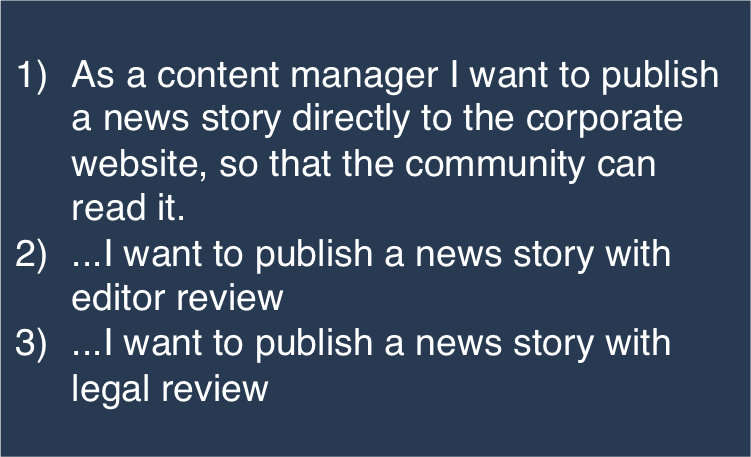We’ve all been there: sprint backlogs filled with large unwieldy epics, or maybe your team has committed to stories that are simply too large to complete during the sprint. An important aspect of the product backlog grooming process in Agile Scrum is the often overlooked task of story decomposition. Story decomposition is the process of breaking down user stories into smaller, more manageable pieces.
Why Decompose a Story?
Sprint backlogs with many small user stories improve the flow in a sprint, enable you to regularly deliver business value to your customer, make for a smoother burndown, and reduce the risk of failing the sprint. The thing to keep in mind is that you want to make sure that your story is still a self-contained increment of value. Larger items tend to be harder to estimate, which can further increase risk.
How to Decompose a Story
There are several methods that I use regularly to identify potential story breakdown opportunities. Bear in mind that it’s preferable to try to keep your stories similar in size to attain the best flow and smoothest burndowns.
Method 1: The CRUD Method
As IT professionals, we often see Create, Read, Update and Delete operations in our stories. These stories are good candidates for decomposition into four (or more) Product Backlog Items. A typical giveaway that something needs CRUD operations is when the story uses the word “manage”.
Example
Original Story:
Decomposed Story:
Method 2: Business Rules
Many user stories involve a number of explicit or implicit business rules, and this may provide another way to break down your stories. You can find these rules by determining with your Product Owner how the story will be tested. This will uncover important business rules. As with all Product Backlog Items, those that come out of business rule findings can and should be prioritized.
Example
Original Story:
Decomposed Story:
Method 3: Workflow Steps
User Stories often involve a workflow or logical step-by-step process. These steps themselves can be self-contained increments of value. An added benefit to this method is that you can attain an enhanced understanding of product and process.
Example
Original Story:
Decomposed Story:
What methods do you use to decompose your stories? Tell us here!





